Jean-Michel Othoniel’s gold-leaf glass sculptures herald a renaissance at the gardens of Versailles

This month Louis XIV dances once again in the gardens of Versailles. In artist Jean-Michel Othoniel's three-part Les Belles Danses, water-spouting strings of gold-leaf in glass bubbles follow carefully choreographed skips, leaps and glides across three reflecting pools, inspired by ballets danced by Louis XIV. The installation, the first new permanent art created for Versailles in three centuries, marks the revival of the garden's Water Theatre grove.
The sculptures are individually tagged 'The Entrance of Apollo', 'The Rigadoun of Peace' and the 'Bourée of Achilles'. After spending much of this year working out of the palace's former apothecary, Othoniel will finish the installation this month and preview the spectacle during FIAC in October, before a grand opening next May.
The piece is based on an obscure dance annotation system developed for Louis XIV by Roger-Auger Feuillet in 1701. In a curious case of artistic synchronicity, Feuillet's startlingly modern-looking hieroglyphs were also recently rediscovered by British photographer Tessa Traeger. (You can read about how she employed them in our October issue, W*187.)
Versailles' Water Theatre grove, a setting for outdoor concerts, ballets and plays, was originally designed by Louis XIV's favoured landscape architect André Le Notre, working with the painter Charles Le Brun, and created between 1671 and 1674. It was destroyed by Louis XVI to make way for lawns and then again, and more emphatically, by the great storm of 1999.
In 2011, the Versailles estate decided it would remodel the garden and launched a competition to find a new design. Othoniel was approached by landscape designer Louis Benech, who had helped give Paris' Tuileries a facelift in the early 1990s, to join him in entering a competition.
Othoniel had experience working in the grandest of historical settings: he'd hung massive glass necklaces in the garden of the Villa Medici in Rome and installed works in the trees of the Peggy Guggenheim Collection's Venetian garden; in the Alhambra gardens in Granada; in the Mesopotamian room at the Louvre; and near the Palais-Royal. The Othoniel/Benech collaborative entry was also the only one to echo the landscaper/artist combination of the 17th century, and beat 140 competitors.
For the past two decades, Othoniel has been working with the world's finest glass blowers: in Murano in Venice, Monterrey in Mexico, Sapporo in Japan and Firozabad in India. And once he had hit upon Feuillet's annotation system, he turned to glass blowers in Murano and Basel to produce 1,750 gilded glass balls to use in his sculptures. To realize his vision, he worked with the fountain engineers of Versailles.
We talked to Othoniel about his new work and connecting with the dancing King...
W*: How did you work with Louis Benech? You hadn't worked together before?
Jean-Michel Othoniel: No, he approached me and I didn't know him, nor was I really even aware of him. But he had seen something of mine at the Pompidou. He had designed the garden stages and he asked me to work on a sculptural element, like Le Notre and Le Brun.
What condition where the gardens in before you started work?
It was a totally wild space. It had been destroyed by the storm in 1999, but it had been already destroyed by Louis XVI. It was totally overgrown and closed off to the public. It was used to store fireworks for events.
Was it hard to imagine what they had once been and what they could become?
I really wanted to link the project to Louis XIV without it becoming pastiche. I read a lot of books about him and particularly about how he used the gardens and realised that it was very choreographed. It was about theatre and dance and display. And then I found the dance annotation.
And you knew instantly that was the idea you needed? That you really had something to work with?
Yes, it seemed very close to the embroidery patterns Le Notre had made; these mazes he produced with small flowers. And there was an obvious connection for me, back to my sculptures. When I saw the annotations, they were so close to the shapes I was using in my work. They were like something from my past life. I could put them in 3D, linked to the body in movement. It was a chance to do something conceptual. The annotation was about writing down movement in space, and in a way that is close to what I try to do with my sculpture.
And you had never seen the dance annotation system before?
No. And I had the chance to read the original in the Boston library when I was doing a residency there. People in ballet knew about it but no one in art knew about it. Graphically, it looks totally contemporary. And to me it seemed to connect to artists like Richard Long and his walking art. I have tried to bring something else to it, something sensual. And also create a place and space for contemplation, much more like the English garden than the formal French garden, a place for introspection and to be in nature.
You've been at work at the former apothecary in Versailles since the beginning of the year. What was that like?
It made the scale of the project even more clear, the location and how unique it was.
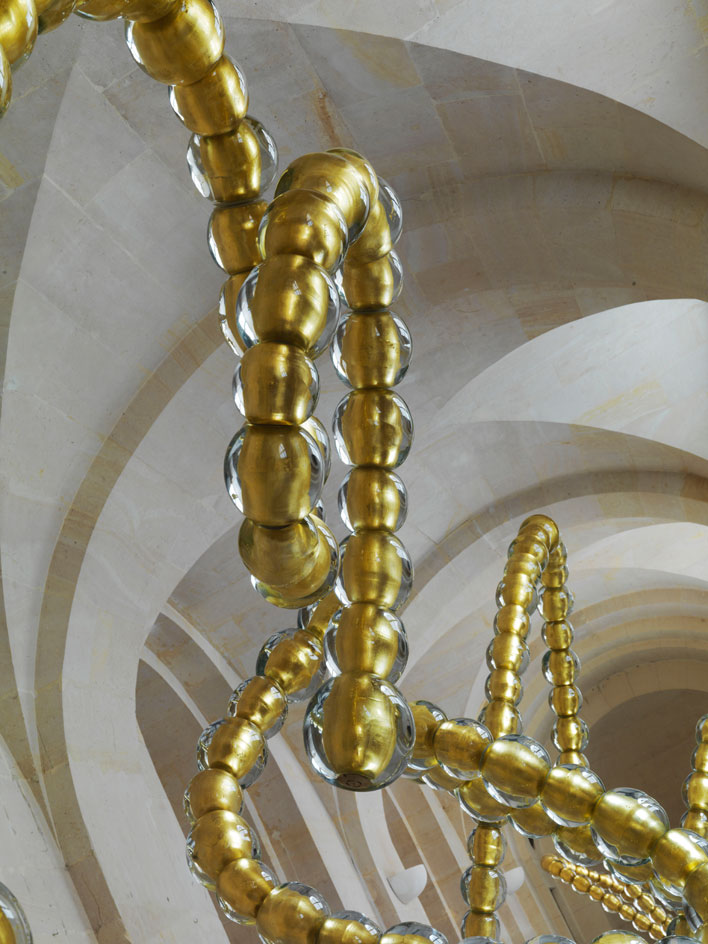
The work is based on an obscure dance annotation system developed for Louis XIV by Roger-Auger Feuillet in 1701. The artist has named them 'The Entrance of Apollo', 'The Rigadoun of Peace' and the 'Bourée of Achilles'. Photography: Philippe Chancel

He's stuffed blown-glass bubbles with gold leaf and strung them into carefully choreographed skips and leaps that will dance across the water. Photography: Philippe Chancel

The Water Theatre grove was commissioned by Louis XIV but destroyed by Louis XVI to make way for grass lawns. Those were decimated in the great storm of 1999. Othoniel's will be the first new permanent art created for Versailles in more than three centuries, and play a starring role in the revival of the grove. Rendering: Othoniel Studio
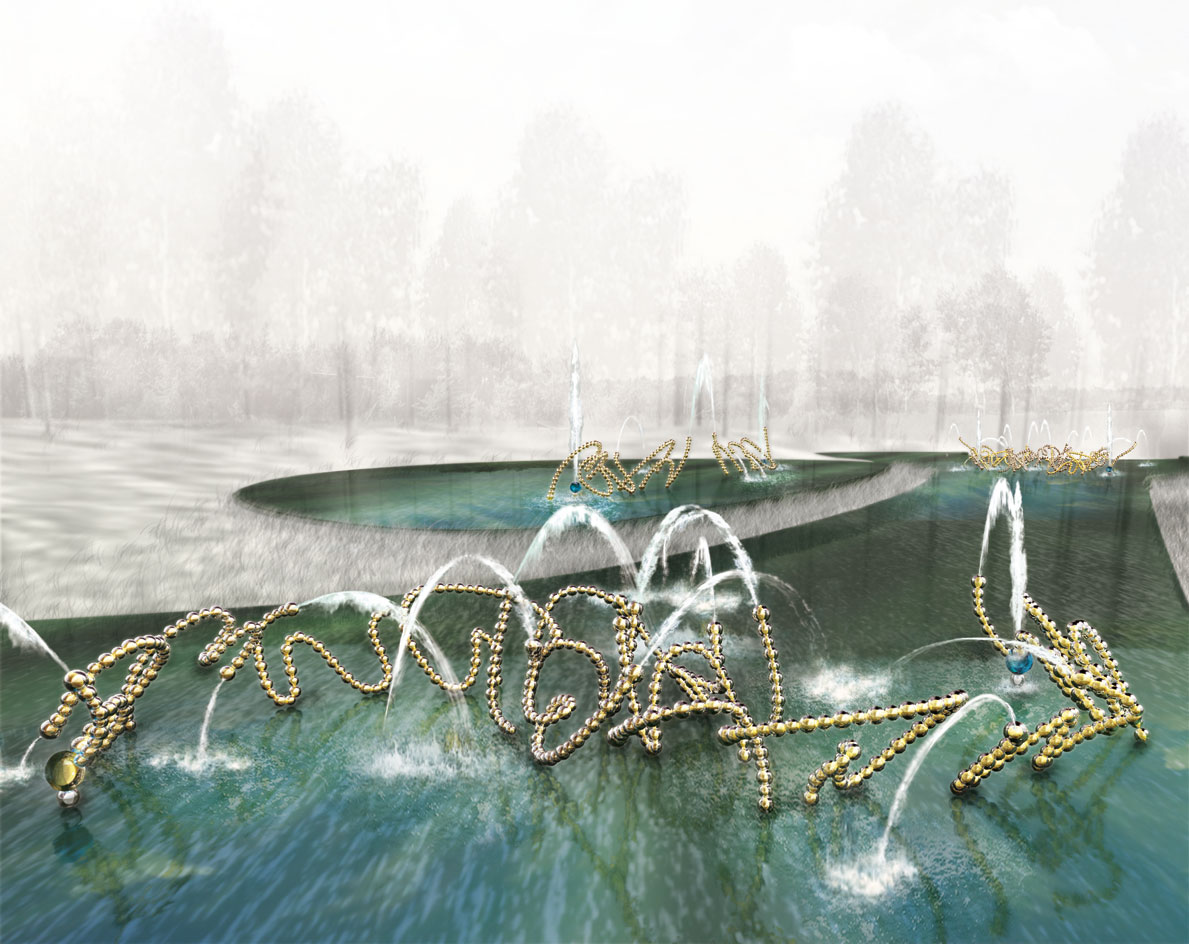
Water will spout around the gold balls to enhance the dance movements. Rendering: Othoniel Studio
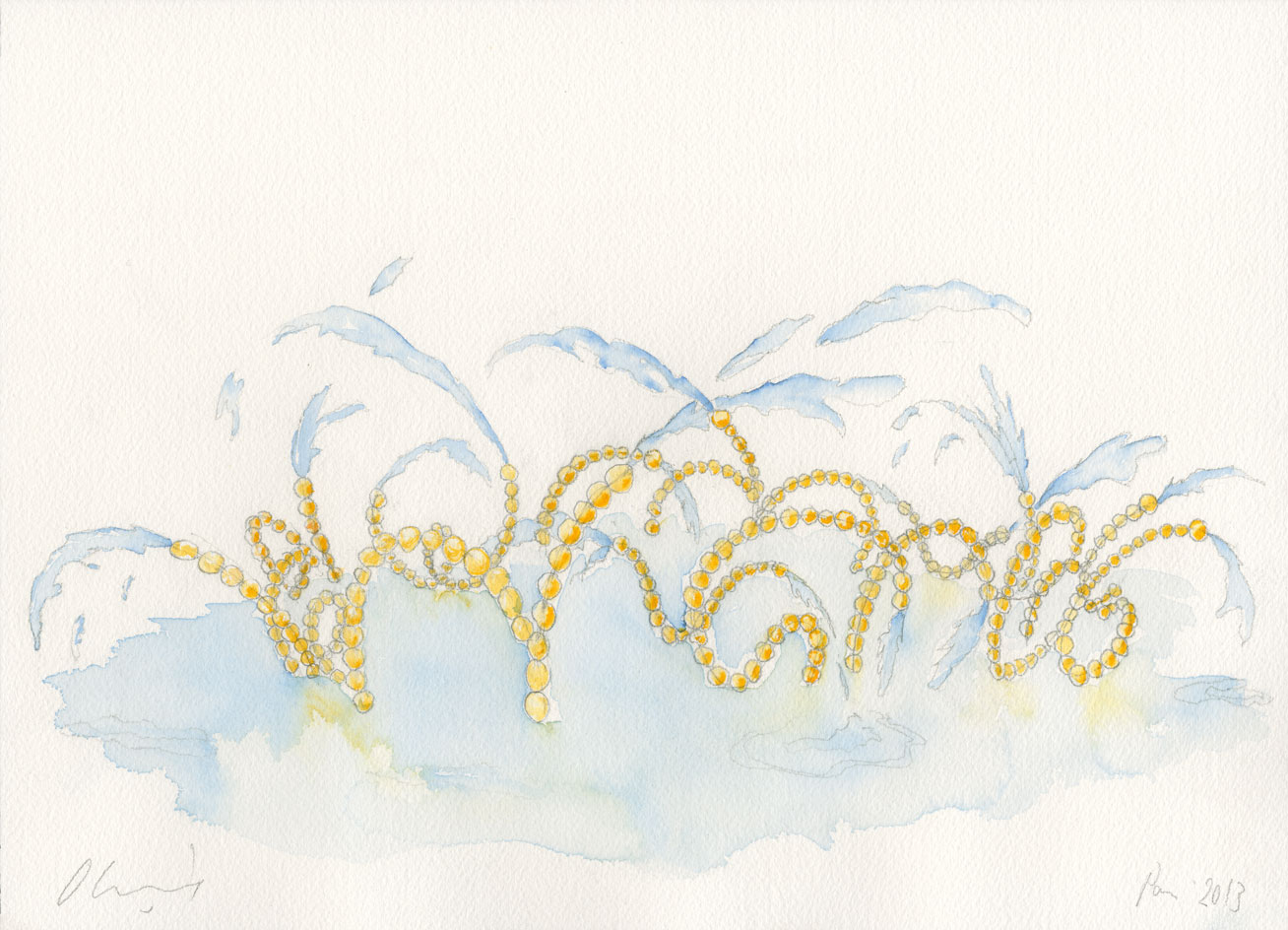
The artist's watercolour sketch for the competition launched by Versailles. He submitted it in collaboration with landscape designer Louis Benech
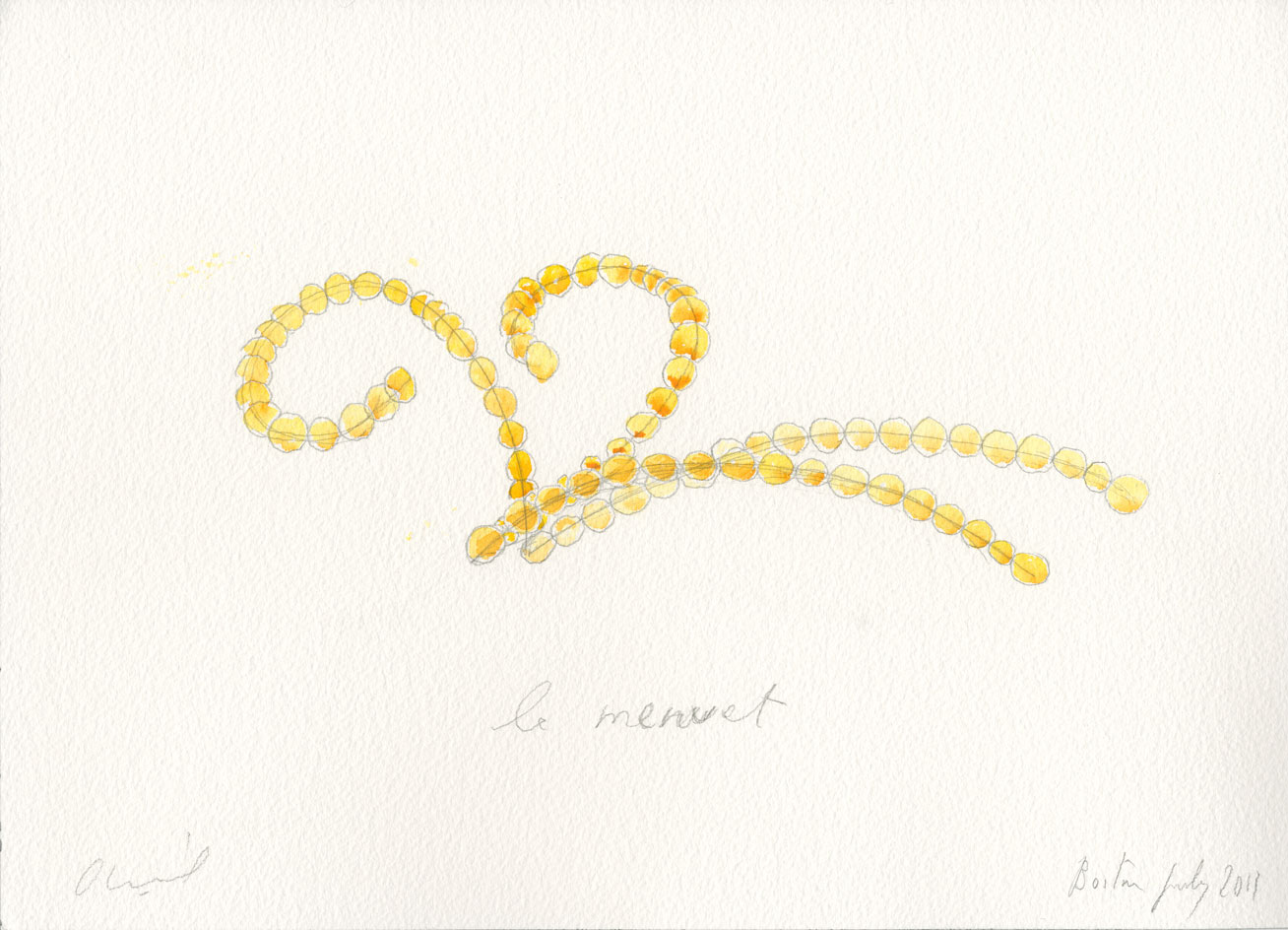
Othoniel turned to glass blowers in Murano and Basel to produce 1,750 gilded glass balls for the sculptures. To realise his vision, he worked with the fountain engineers of Versailles
ADDRESS
Château de Versailles
Place d'Armes
78000 Versailles
Wallpaper* Newsletter
Receive our daily digest of inspiration, escapism and design stories from around the world direct to your inbox.
-
 All-In is the Paris-based label making full-force fashion for main character dressing
All-In is the Paris-based label making full-force fashion for main character dressingPart of our monthly Uprising series, Wallpaper* meets Benjamin Barron and Bror August Vestbø of All-In, the LVMH Prize-nominated label which bases its collections on a riotous cast of characters – real and imagined
By Orla Brennan
-
 Maserati joins forces with Giorgetti for a turbo-charged relationship
Maserati joins forces with Giorgetti for a turbo-charged relationshipAnnouncing their marriage during Milan Design Week, the brands unveiled a collection, a car and a long term commitment
By Hugo Macdonald
-
 Through an innovative new training program, Poltrona Frau aims to safeguard Italian craft
Through an innovative new training program, Poltrona Frau aims to safeguard Italian craftThe heritage furniture manufacturer is training a new generation of leather artisans
By Cristina Kiran Piotti
-
 Inside Jack Whitten’s contribution to American contemporary art
Inside Jack Whitten’s contribution to American contemporary artAs Jack Whitten exhibition ‘Speedchaser’ opens at Hauser & Wirth, London, and before a major retrospective at MoMA opens next year, we explore the American artist's impact
By Finn Blythe
-
 Frieze Sculpture takes over Regent’s Park
Frieze Sculpture takes over Regent’s ParkTwenty-two international artists turn the English gardens into a dream-like landscape and remind us of our inextricable connection to the natural world
By Smilian Cibic
-
 Harlem-born artist Tschabalala Self’s colourful ode to the landscape of her childhood
Harlem-born artist Tschabalala Self’s colourful ode to the landscape of her childhoodTschabalala Self’s new show at Finland's Espoo Museum of Modern Art evokes memories of her upbringing, in vibrant multi-dimensional vignettes
By Millen Brown-Ewens
-
 Wanås Konst sculpture park merges art and nature in Sweden
Wanås Konst sculpture park merges art and nature in SwedenWanås Konst’s latest exhibition, 'The Ocean in the Forest', unites land and sea with watery-inspired art in the park’s woodland setting
By Alice Godwin
-
 Pino Pascali’s brief and brilliant life celebrated at Fondazione Prada
Pino Pascali’s brief and brilliant life celebrated at Fondazione PradaMilan’s Fondazione Prada honours Italian artist Pino Pascali, dedicating four of its expansive main show spaces to an exhibition of his work
By Kasia Maciejowska
-
 John Cage’s ‘now moments’ inspire Lismore Castle Arts’ group show
John Cage’s ‘now moments’ inspire Lismore Castle Arts’ group showLismore Castle Arts’ ‘Each now, is the time, the space’ takes its title from John Cage, and sees four artists embrace the moment through sculpture and found objects
By Amah-Rose Abrams
-
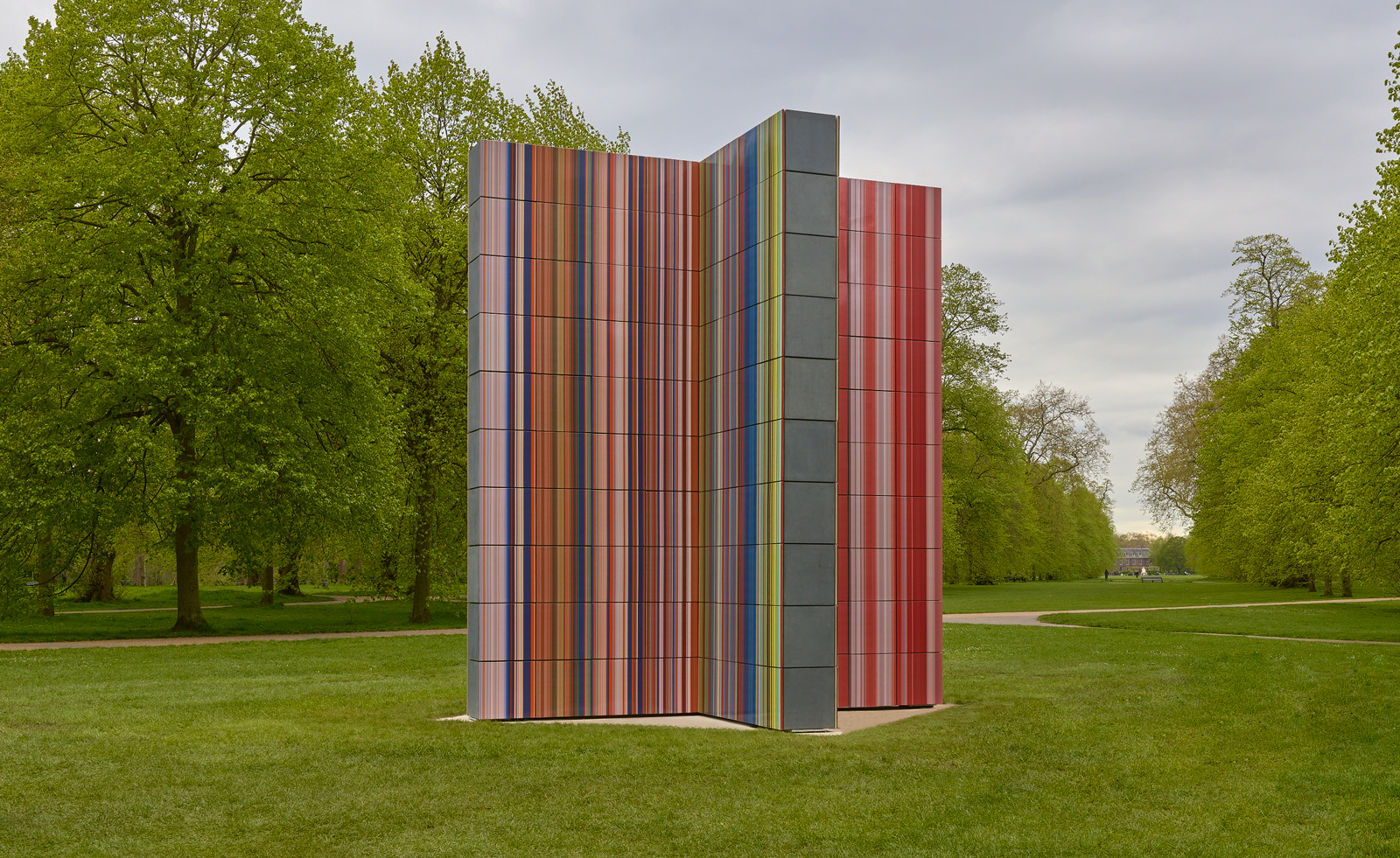 Gerhard Richter unveils new sculpture at Serpentine South
Gerhard Richter unveils new sculpture at Serpentine SouthGerhard Richter revisits themes of pattern and repetition in ‘Strip-Tower’ at London’s Serpentine South
By Hannah Silver
-
 Peter Blake’s sculptures spark joy at Waddington Custot in London
Peter Blake’s sculptures spark joy at Waddington Custot in London‘Peter Blake: Sculpture and Other Matters’, at London's Waddington Custot, spans six decades of the artist's career
By Hannah Silver